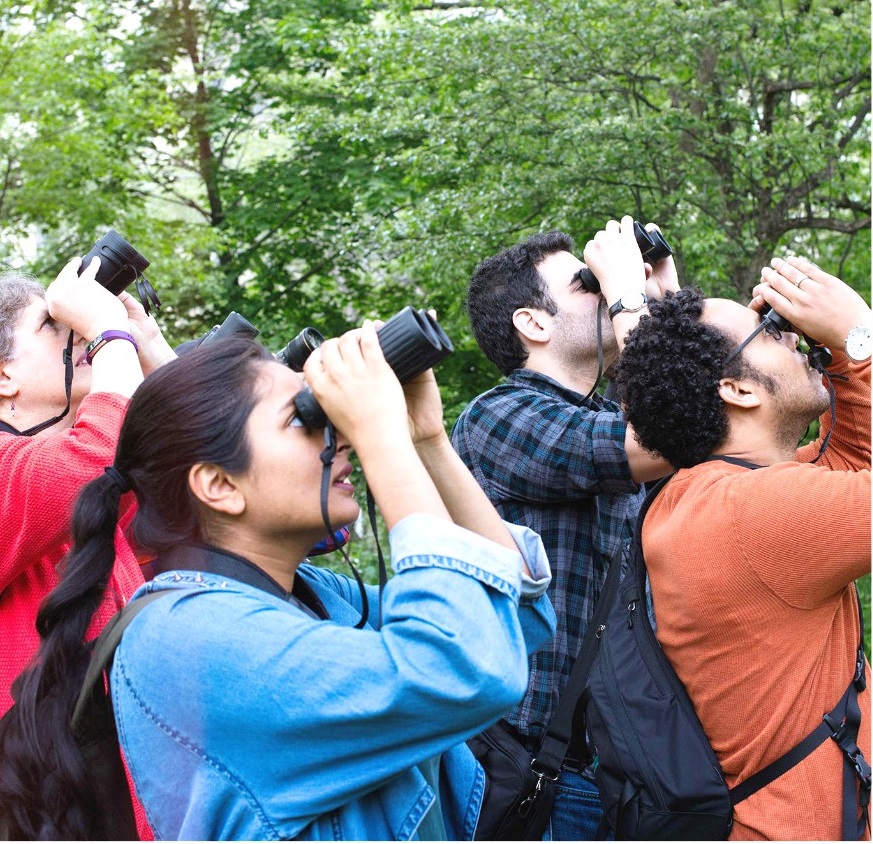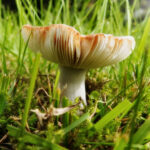Help Audubon Protect Threatened Birds
Audubon’s Climate Watch Program needs volunteers to help it spot 12 birds threatened by climate change. Are you in?
“Hope is the thing with feathers/ That perches in the soul,” Emily Dickinson wrote. Is there hope for our feathered friends in the era of climate change? Yes, but they need our help. More than 300 North American birds will likely lose over 50 percent of their current geographical range by 2080, according to Audubon’s 2014 Birds and Climate Change Report. This means that the areas with the climate conditions these birds need are shifting or disappearing. Just like people, birds will need to adapt to big climatic changes.
For people who want to help threatened birds, Audubon runs a community science program called Climate Watch that gives volunteers resources to monitor these range shifts. Brooke Bateman, Audubon senior climate scientist, told us that Audubon uses the term community science because they find it to be a “more inclusive and welcoming” term for everyone in United States, as opposed to citizen science.
Within Climate Watch, volunteers team up with coordinators to learn how to participate in two annual bird counts across the nation. One is in the winter (Jan. 1 to Feb. 15), and one is happening right now (May 15 to June 15). The data collected through these surveys inform Audubon’s on-the-ground conservation decisions.
“Citizen science is turning out to be hugely important for monitoring bird populations and their responses to climate change… scientists can’t possibly be everywhere to collect the needed data,” Rodney Siegel, executive director of the Institute for Bird Populations (IBP) (who is not affiliated with Climate Watch), said. Climate Watch volunteers collect crucial data that can help scientists better understand and support climate-threatened bird species.
The How and Why of Climate Watch
When Climate Watch launched in 2016, it focused on Bluebirds and Nuthatches, both of which are relatively easy to identify. Since 2016, the initiative added 10 more species to its roster, including the rainbow-hued Painted Bunting. Climate Watch gathers data on sightings of these species in areas where their ranges are predicted to change. It provides volunteers with maps of each location, split into observation squares. A Climate Watch Coordinator can help people select locations and survey squares and follow the special observation protocols. Audubon shares an online list of coordinators and, if there isn’t one available nearby, people can learn how to join in independently, as well.
Kathy Dale, director of science technology at the National Audubon Society, is a Climate Watch participant, and she said she likes “going out to survey birds with a purpose… The two squares where I survey help to form a chain of linked areas between western Philadelphia and [Baltimore], so I feel like I am helping to fill in needed information that makes the data more valuable.”
Doug Young, Climate Watch coordinator and chief operating officer of the South Florida Audubon Society, said that while “reaching as many people as possible” is an enduring challenge of conservation work, Climate Watch empowers him in this regard. “One of the rewards of participating… is the opportunity to communicate the knowledge I have of climate change [to]… public school students, higher education students, adult groups, business leaders, and elected officials,” he said.
As Audubon continues to gather data on these threatened birds, it tests and “ground-truths” its predictions of whether their climatic ranges are changing. “Whether or not birds are able to shift or expand into new areas will depend on whether appropriate habitat and food sources are present,” the Audubon website explains. For example, Audubon finds the azure Mountain Bluebird’s summer range will shift northward and eastward, meaning that it “may be able to move into new areas over time, or it may struggle to adapt.” Climate Watch findings help Audubon steer its bird-centered conservation work.
Audubon explained that along with joining bird-watch programs, experienced and curious birders can also support their local winged friends by planting native species of plants, which don’t require synthetic fertilizer or pesticides, in their yards and communities. Bateman said these types of conservation efforts that are targeted at these bird species have broad benefits for the environment and for all of us. She quoted biologist and conservationist Thomas Lovejoy: “If you take care of the birds, you take care of most of the big problems in the world.”
Local Everywhere: Audubon Is One Big Community
For Climate Watch, Audubon selected a variety of target threatened birds with distinct features that are identifiable, even for most beginners. The birds also hail from all over the United States, in rural, suburban, and urban areas. Using visually striking birds from everywhere is one of the ways Audubon seeks to diversify this public birding program, Bateman said.
“We really want to reach a broader, more diverse, younger audience; to help inspire people to become the next voice and the next wave of stewards for the planet,” she said.
Bateman compared a diversity in human perspectives to ecological diversity: “The more diversification you have… the more resilient that system will be to change.” Audubon has launched campus chapters and offers an interactive, free Bird Guide app to broaden its community and make its programs more accessible. Audubon has 450 chapters across the United States.
“We are local everywhere,” Bateman said, adding that individuals of diverse backgrounds and political persuasions love birds. She quoted Audubon’s President and CEO David Yarnold: “We’re everybody’s neighbor.” Batemen called birds a “wonderful uniter of people.”
Though the severity of climate change is daunting, Climate Watch gives everyone an opportunity to participate in an organized, scientific, and person-driven community response to help protect and study threatened birds.
“Fortunately, skilled birders and other citizen scientists who care about conservation have stepped up just when we need them,” Siegel of IBP said.
Bateman emphasized that local connections are vital to successful, enduring conservation efforts. “[Climate Watch] is an opportunity to meet people in their own communities and give them the opportunity to just connect with nature, to learn about climate change in a way that maybe they would not have been able to do otherwise.”
Bateman said people respond to “what they’ve seen with their own eye.”
“I have a lot of hope,” she said. “I think the next generation of folks are switched on and that there’s obviously going to be more solutions and more thoughts moving forward. I just hope we can keep the momentum going to really make a difference.”
Want more citizen science? Check out SciStarter’s Project Finder! With citizen science projects spanning every field of research, task and age group, there’s something for everyone!
About the Author
Julia Travers writes about science, tech, art and creative responses to adversity. Her work can be found with NPR, APR and Earth Island Journal, among other publications. Find her on Twitter @traversjul.
Featured Image by Mike Fernandez for Audubon.




